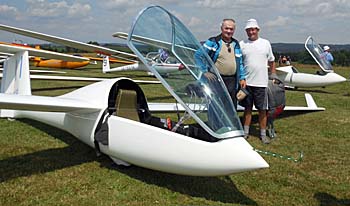
For your weekend enjoyment — and because I am a soaring enthusiast … plus I was sent some interesting photos — consider this slick Part 103 glider, or motorglider (photo). Radek Hucik sent photos of the aircraft performing at a Czech soaring content, where it placed 12th out of 34 competitors. Considering most of the others appear to be conventional sailplanes, one that meets Part 103 at much less weight did well. A high end sailplane can hit or exceed a 50:1 glide angle. This is an amazing performance mark, which translates to flying nearly ten miles from only 1,000 feet of altitude. The XS-12 Saggita manages 35:1 (more specs below) and that is a noteworthy achievement for such a light aircraft. Radek wrote, “[This is] a powered glider that my colleagues and I have developed over the past 20 months. The glider is designed so that it meets Federal Aviation Regulations Part 103 [for] Ultralight Vehicles.



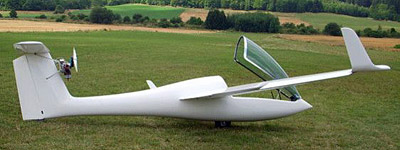


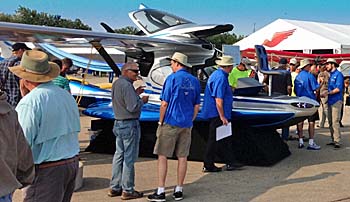

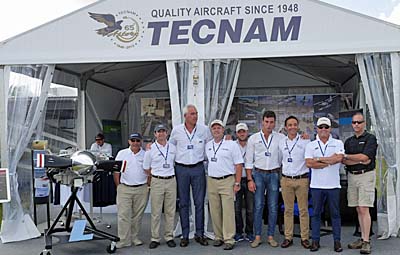
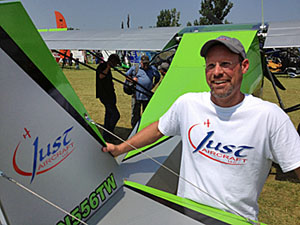
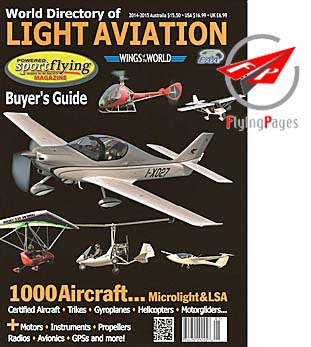

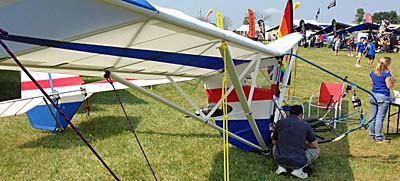


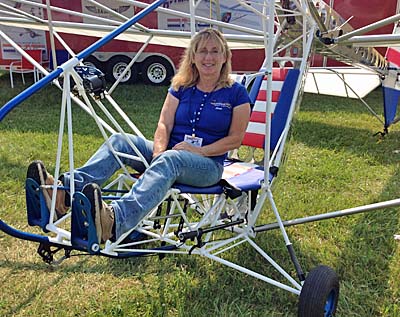

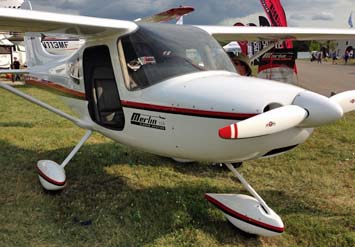

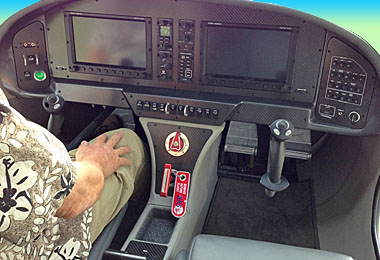

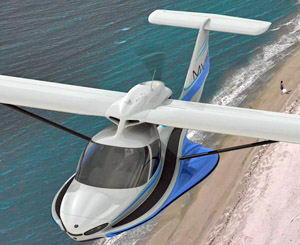
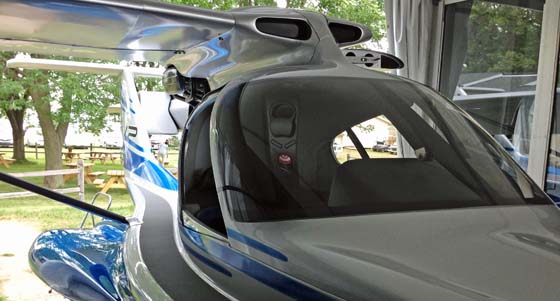
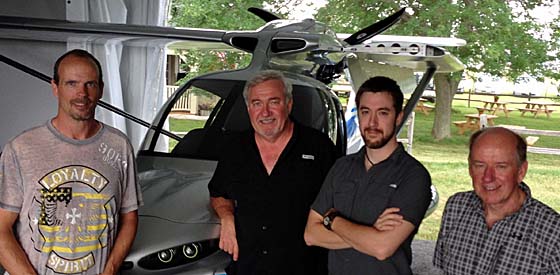

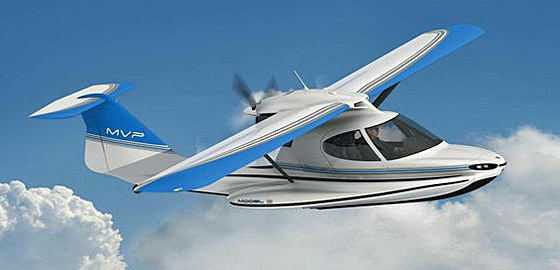

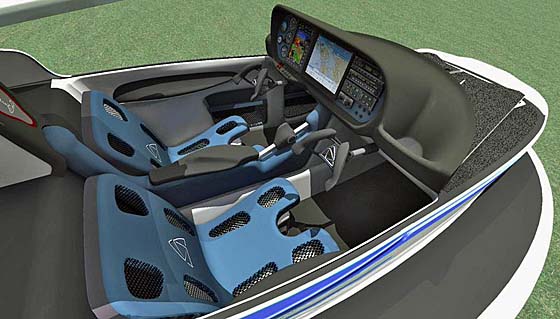


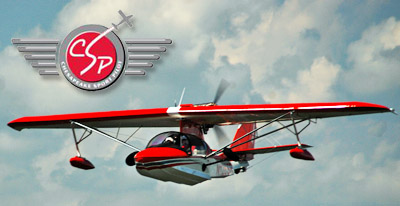
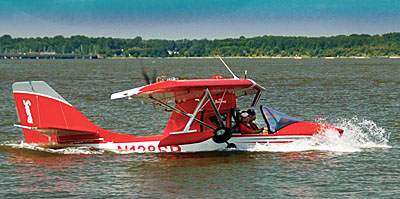
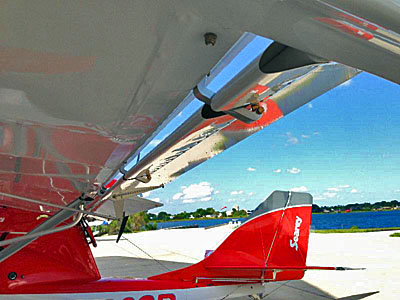

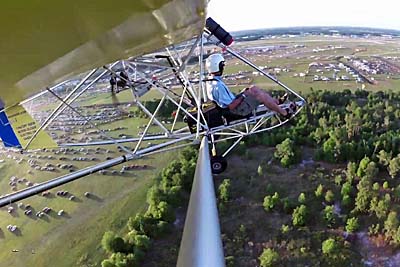
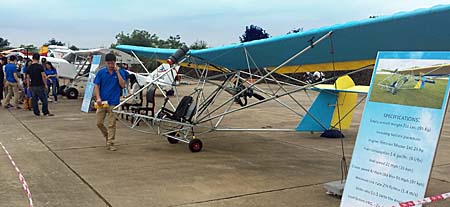
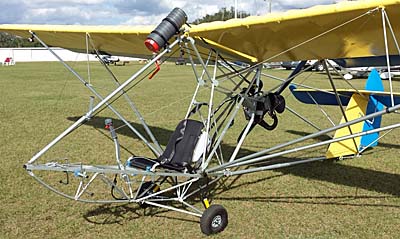

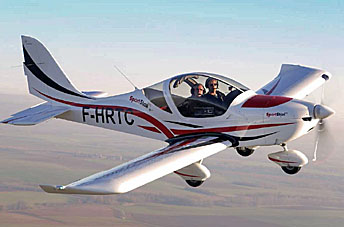
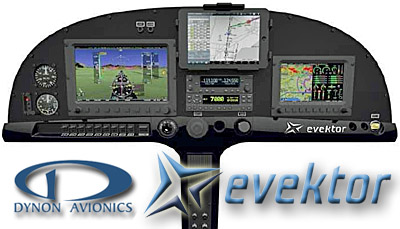
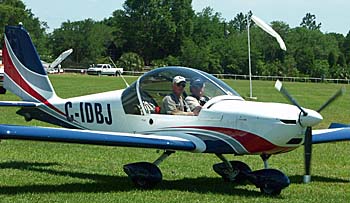

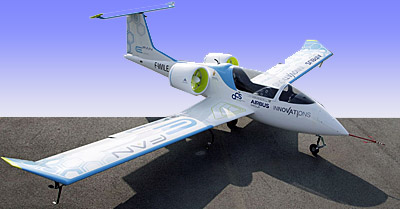

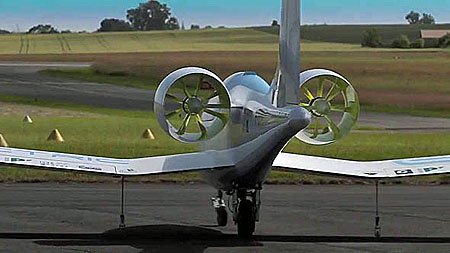
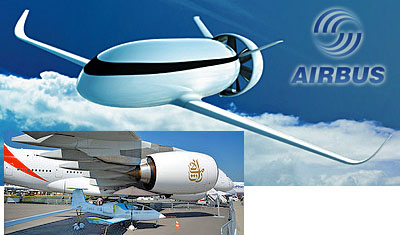




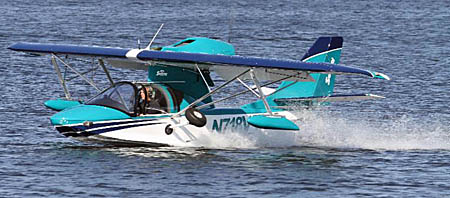



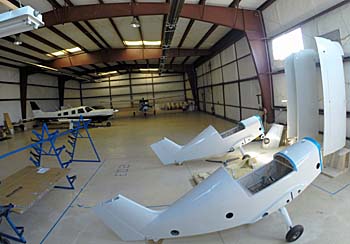
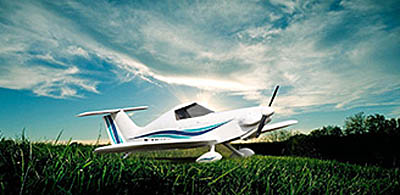

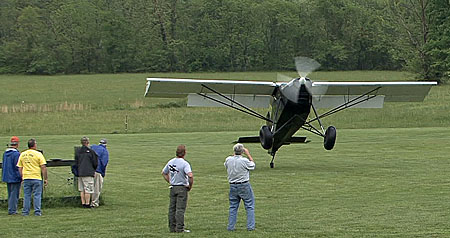
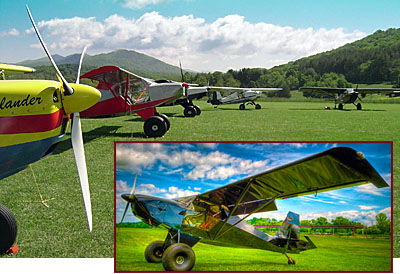
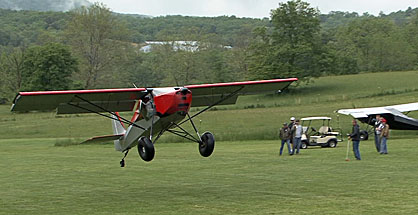

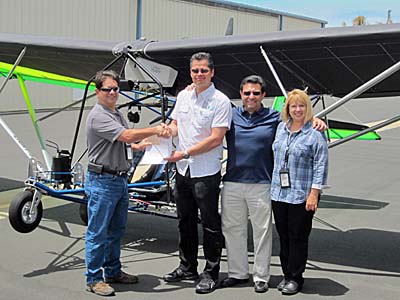
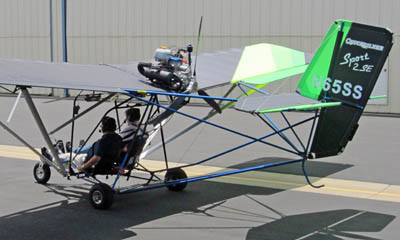


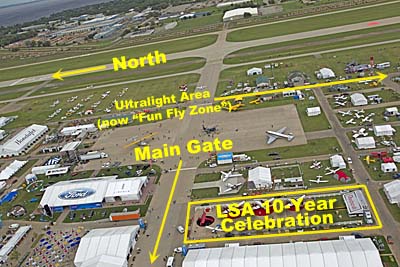
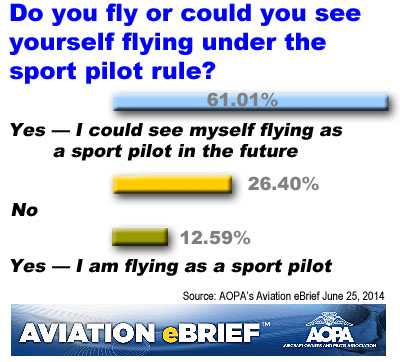

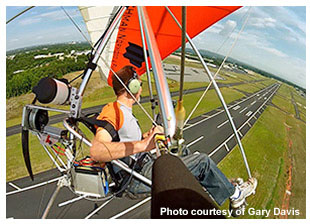

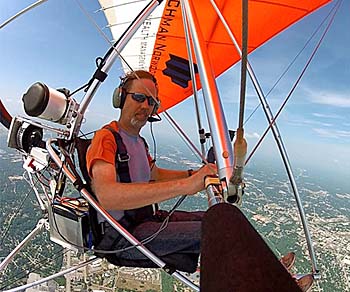

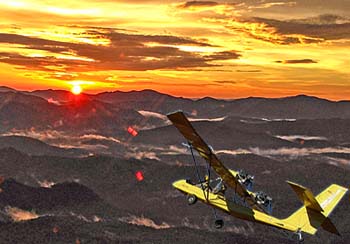
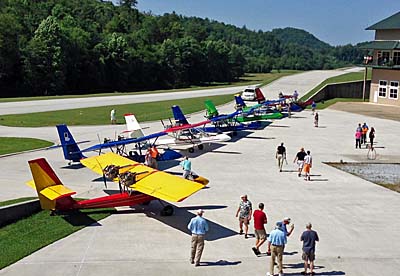
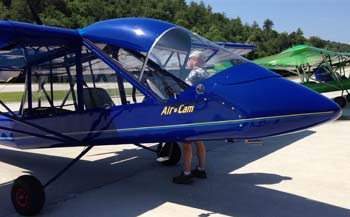
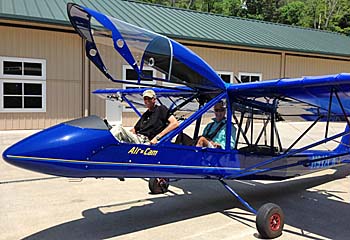

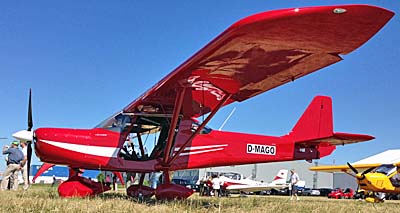
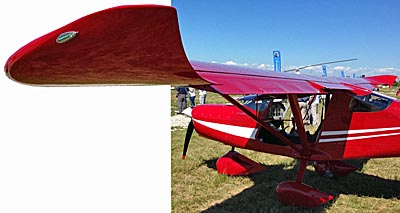 Mago, a former construction company owner who once operated in Italy, had a smooth command of English and of his airplane, appearing completely at ease in his flying machine.
Mago, a former construction company owner who once operated in Italy, had a smooth command of English and of his airplane, appearing completely at ease in his flying machine. 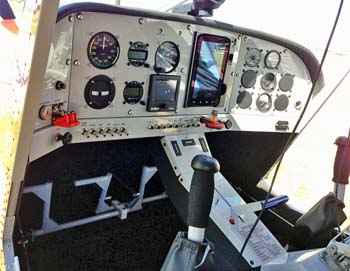 Sila 450 might be the airplane Cessna should have built when they offered their Skycatcher. By that I mean Sila is a conventional aircraft in many ways. It does not use the smooth lines of carbon fiber designs; Sila is all metal. It is not cantilevered, using dual struts. Sila's instrument panel, though faceted to better show instruments to its occupants, lacks the automobile-inspired undulations of Icon's A5. As expected since I flew the aircraft at the
Sila 450 might be the airplane Cessna should have built when they offered their Skycatcher. By that I mean Sila is a conventional aircraft in many ways. It does not use the smooth lines of carbon fiber designs; Sila is all metal. It is not cantilevered, using dual struts. Sila's instrument panel, though faceted to better show instruments to its occupants, lacks the automobile-inspired undulations of Icon's A5. As expected since I flew the aircraft at the 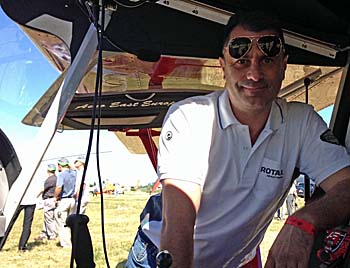 Mago is an interesting combination of intense and laid back. He obviously loves flying and trusts his design. On our takeoff from Rotax's home field of Weisse Moewe, Sila seemed to leap off the ground and climb powerfully for several hundred feet. Ground roll is listed at 146 feet, which I'm inclined to believe after noting our fast launch. Climb is 1,000 fpm but it felt even stronger on initial climbout. As we ran through basic maneuvers, stall proved very slow at around 30 knots. Given a max speed of close to 110 knots, Sila nearly reaches the magical 4:1 ratio from slowest to fastest. Handling was very predictable. Stability was proven though joystick push- or pull-and-release checks plus Sila held attitude even in steep turns with modest control input. Overall, the airplane behaved with good manners. The interior was, like the exterior, conventional in its construction but with a decent finish. In other words, it doesn't qualify as fancy but is well appointed. Cabin width was a spacious 47.6 inches. So you get a lot but you don't pay much. That conventional construction plus eastern European costs allow Aero-East-Europe to sell Sila for €55,000 (about $76,000 at present exchange rates) before shipping or government expenses. At that, I see a fair bargain in a well-flying airplane. Mago (photo) is keen to investigate entering the American market. While we have a surplus of well regarded airplanes from more famous brands, some pilots express an interest in something different. Sila may fit that requirement.
Mago is an interesting combination of intense and laid back. He obviously loves flying and trusts his design. On our takeoff from Rotax's home field of Weisse Moewe, Sila seemed to leap off the ground and climb powerfully for several hundred feet. Ground roll is listed at 146 feet, which I'm inclined to believe after noting our fast launch. Climb is 1,000 fpm but it felt even stronger on initial climbout. As we ran through basic maneuvers, stall proved very slow at around 30 knots. Given a max speed of close to 110 knots, Sila nearly reaches the magical 4:1 ratio from slowest to fastest. Handling was very predictable. Stability was proven though joystick push- or pull-and-release checks plus Sila held attitude even in steep turns with modest control input. Overall, the airplane behaved with good manners. The interior was, like the exterior, conventional in its construction but with a decent finish. In other words, it doesn't qualify as fancy but is well appointed. Cabin width was a spacious 47.6 inches. So you get a lot but you don't pay much. That conventional construction plus eastern European costs allow Aero-East-Europe to sell Sila for €55,000 (about $76,000 at present exchange rates) before shipping or government expenses. At that, I see a fair bargain in a well-flying airplane. Mago (photo) is keen to investigate entering the American market. While we have a surplus of well regarded airplanes from more famous brands, some pilots express an interest in something different. Sila may fit that requirement.
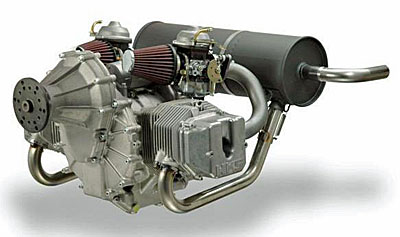
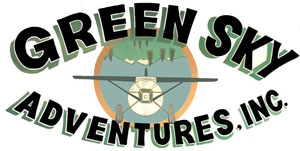
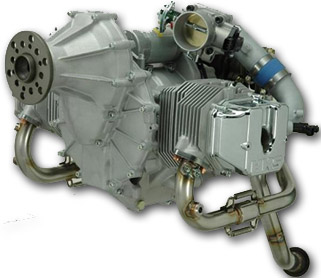
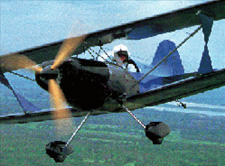

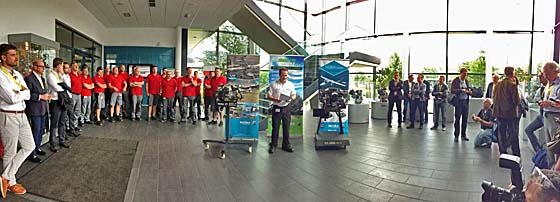 I am writing from Europe, from two neighboring towns in what's called Upper Austria: Wels and Gunskirchen. The former is where the Rotax
I am writing from Europe, from two neighboring towns in what's called Upper Austria: Wels and Gunskirchen. The former is where the Rotax 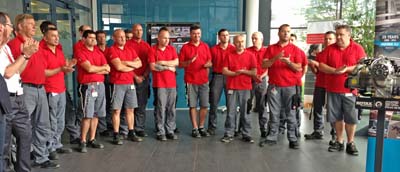 The large Austrian company that employs 1,100 people in a modern factory produces engines for a variety of applications in large volumes. Among these are engines for BMW motorcycles and others plus a range of engines used in their own products including snow mobiles, watercraft, and on- and off-road vehicles. They also make engines for unmanned air vehicles or drones and, as you are well aware, aircraft engines for Light-Sport, light kits, and ultralight aircraft. Of the latter, they've built more than 170,000 engines. The final assembly of the aircraft engines, composing some of the most desired job positions in the company, are done by a special aircraft engine team (photo, red shirts) in a separate facility from the giant manufacturing hall.
The large Austrian company that employs 1,100 people in a modern factory produces engines for a variety of applications in large volumes. Among these are engines for BMW motorcycles and others plus a range of engines used in their own products including snow mobiles, watercraft, and on- and off-road vehicles. They also make engines for unmanned air vehicles or drones and, as you are well aware, aircraft engines for Light-Sport, light kits, and ultralight aircraft. Of the latter, they've built more than 170,000 engines. The final assembly of the aircraft engines, composing some of the most desired job positions in the company, are done by a special aircraft engine team (photo, red shirts) in a separate facility from the giant manufacturing hall.
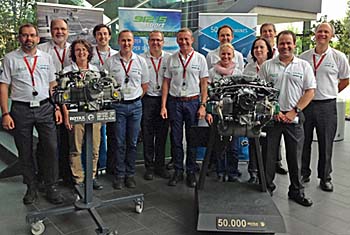 A carefully managed company that encourages and uses a large number of suggestions from their manufacturing personnel is impressive in its detailed approach to high quality products. Improvements small and large are encouraged from workers and successful ideas are celebrated and rewarded. Management and their staff (photo, white shirts) do an impressive job of oversight but are quick to note the value of their team members with wrenches in their hands. Computerized equipment is widely used from fully automated robots to methods of helping workers do top-notch work. An example: Hand-held screw machines not only help workers do their job but send information to computers to count the number of screws installed per engine and to record the torque level for each one. Many other such controls are in place resulting in engines that have very few faults. When a problem is discovered, both innovative and ordinary means are employed to quickly remedy the situation. Top managers meet every day with team leaders right on the factory floor in plain sight of workers. Every engine is test run; aircraft engines have a thorough test program.
A carefully managed company that encourages and uses a large number of suggestions from their manufacturing personnel is impressive in its detailed approach to high quality products. Improvements small and large are encouraged from workers and successful ideas are celebrated and rewarded. Management and their staff (photo, white shirts) do an impressive job of oversight but are quick to note the value of their team members with wrenches in their hands. Computerized equipment is widely used from fully automated robots to methods of helping workers do top-notch work. An example: Hand-held screw machines not only help workers do their job but send information to computers to count the number of screws installed per engine and to record the torque level for each one. Many other such controls are in place resulting in engines that have very few faults. When a problem is discovered, both innovative and ordinary means are employed to quickly remedy the situation. Top managers meet every day with team leaders right on the factory floor in plain sight of workers. Every engine is test run; aircraft engines have a thorough test program.
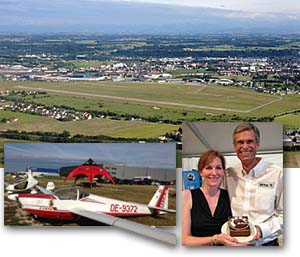 At the Rotax Fly-in groups from 20 countries gathered to help the company and its employees celebrate their 25 years in aircraft engine production that has resulted in 50,000 9-series engines. You can do the math in your head to see their output but keep in mind that figure does not include many two stroke engines nor any of the other engines produced in Gunskirchen. Airfield activities allowed everyone to take flights in 912 iS-powered aircraft or take a ride on the company's handsome three-wheel motorcycles. I did the latter plus took my first flight in Rotax's test-bed Tecnam P-92 now powered with the latest 912 iS Sport engine model. Austria is a beautiful country and it was great to gain an aerial perspective of the home airport and factory for this major contributor to the success of Light-Sport Aircraft. Rotax enjoys approximately an 80% market share among light aircraft engine producers and all who attended their event, took factory tours, and met the team members have a better idea why this company has such a convincing lead. Thanks, Rotax, for all your hard work and for a great party to celebrate 25 years of doing it well.
With Francois Tremblay leading the announcements, the following short video provides some feel for the excitement generated by production of 50,000 912 engines over 25 years.
At the Rotax Fly-in groups from 20 countries gathered to help the company and its employees celebrate their 25 years in aircraft engine production that has resulted in 50,000 9-series engines. You can do the math in your head to see their output but keep in mind that figure does not include many two stroke engines nor any of the other engines produced in Gunskirchen. Airfield activities allowed everyone to take flights in 912 iS-powered aircraft or take a ride on the company's handsome three-wheel motorcycles. I did the latter plus took my first flight in Rotax's test-bed Tecnam P-92 now powered with the latest 912 iS Sport engine model. Austria is a beautiful country and it was great to gain an aerial perspective of the home airport and factory for this major contributor to the success of Light-Sport Aircraft. Rotax enjoys approximately an 80% market share among light aircraft engine producers and all who attended their event, took factory tours, and met the team members have a better idea why this company has such a convincing lead. Thanks, Rotax, for all your hard work and for a great party to celebrate 25 years of doing it well.
With Francois Tremblay leading the announcements, the following short video provides some feel for the excitement generated by production of 50,000 912 engines over 25 years.